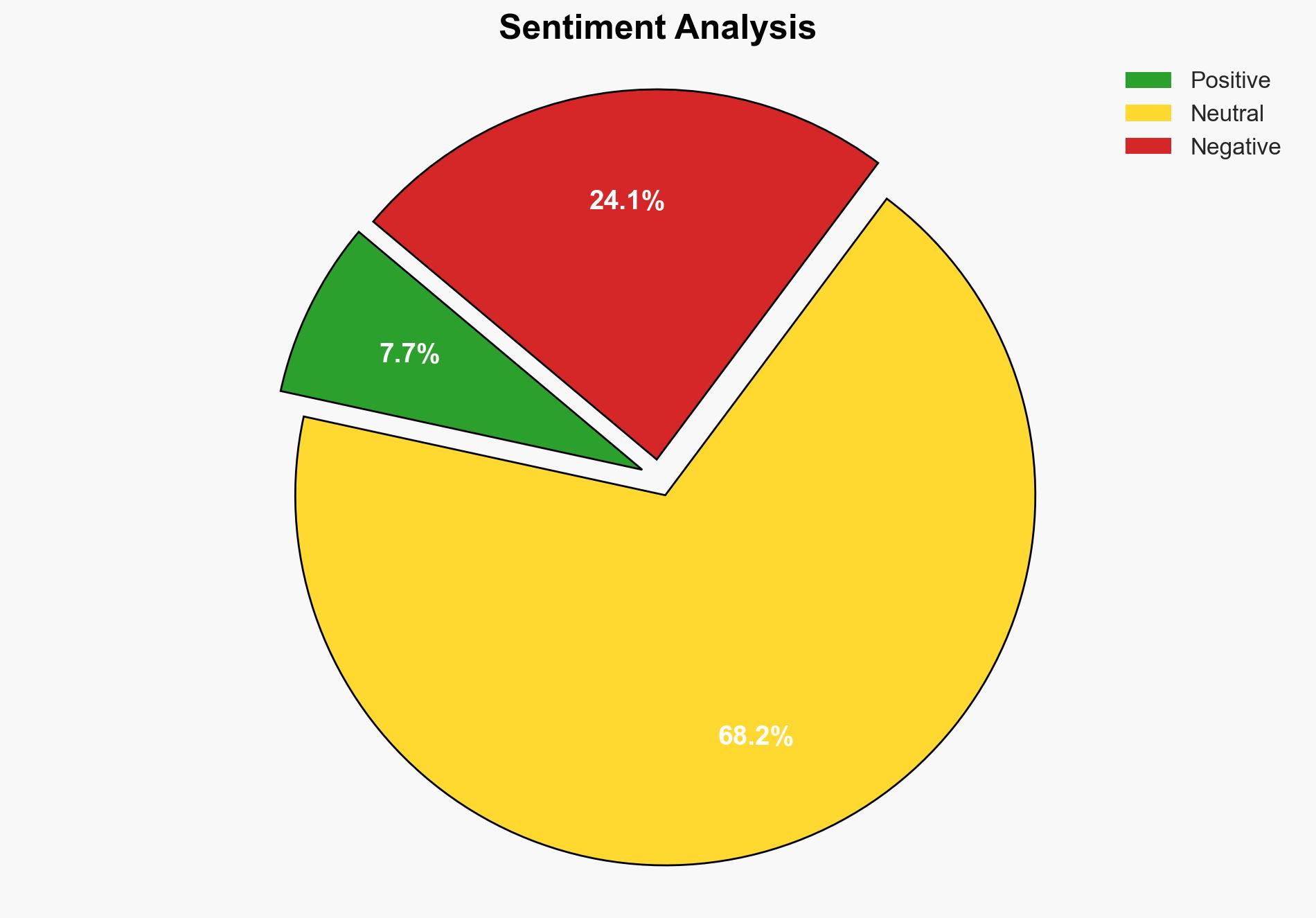ChatGPT SSRF bug quickly becomes a favorite attack vector – Securityaffairs.com
Published on: 2025-03-18
Intelligence Report: ChatGPT SSRF Bug Quickly Becomes a Favorite Attack Vector – Securityaffairs.com
1. BLUF (Bottom Line Up Front)
The exploitation of a Server-Side Request Forgery (SSRF) vulnerability in ChatGPT’s PictureProxy.php has emerged as a significant threat. This vulnerability, tracked under a specific CVE, allows attackers to inject arbitrary URLs, leading to unauthorized server requests. The flaw is particularly concerning for financial and government organizations, as it can be exploited without authentication. Immediate patching and enhanced security measures are recommended to mitigate this risk.
2. Detailed Analysis
The following structured analytic techniques have been applied for this analysis:
General Analysis
The SSRF vulnerability in ChatGPT’s PictureProxy.php is due to insufficient validation of URL parameters. This allows attackers to craft URLs that trigger arbitrary server requests. The vulnerability has been exploited by multiple threat actors targeting industries across various geographies, including financial and healthcare sectors in Germany, Thailand, Indonesia, Colombia, and the UK. The exploitation trend indicates a shift towards automating attacks to scan for weaknesses, making it a preferred attack vector despite its medium severity score.
3. Implications and Strategic Risks
The widespread exploitation of this SSRF vulnerability poses significant risks to national security, regional stability, and economic interests. The ability to conduct unauthorized server requests can lead to data breaches, financial losses, and compromised sensitive information. The vulnerability’s exploitation in critical sectors like finance and healthcare underscores the potential for severe disruptions and long-term impacts on organizational trust and operational integrity.
4. Recommendations and Outlook
Recommendations:
- Prioritize patching of the SSRF vulnerability in ChatGPT’s PictureProxy.php across all affected systems.
- Enhance intrusion prevention systems and web application firewalls to detect and block SSRF attempts.
- Conduct regular security audits and penetration testing to identify and mitigate similar vulnerabilities.
- Implement comprehensive security awareness training for staff to recognize and respond to potential threats.
Outlook:
Best-case scenario: Organizations promptly patch the vulnerability, significantly reducing the attack surface and preventing further exploitation.
Worst-case scenario: Delayed response leads to widespread exploitation, resulting in significant data breaches and financial losses.
Most likely outcome: A mixed response with some organizations effectively mitigating the risk while others remain vulnerable, leading to targeted attacks.
5. Key Individuals and Entities
The report mentions significant individuals and organizations involved in the analysis and response to the SSRF vulnerability. Notable entities include Veriti and Securityaffairs, which have provided critical insights into the vulnerability’s exploitation and impact.




